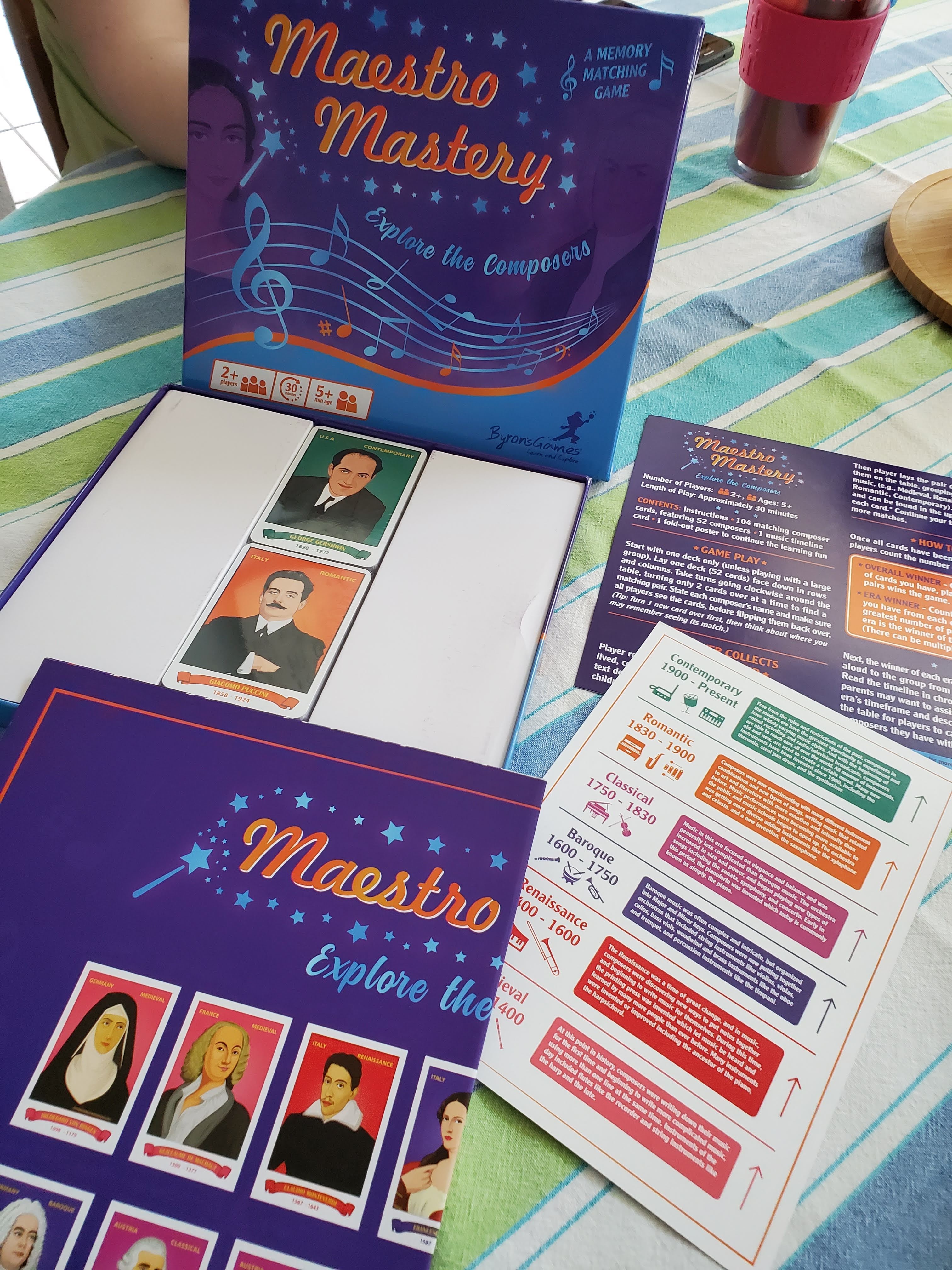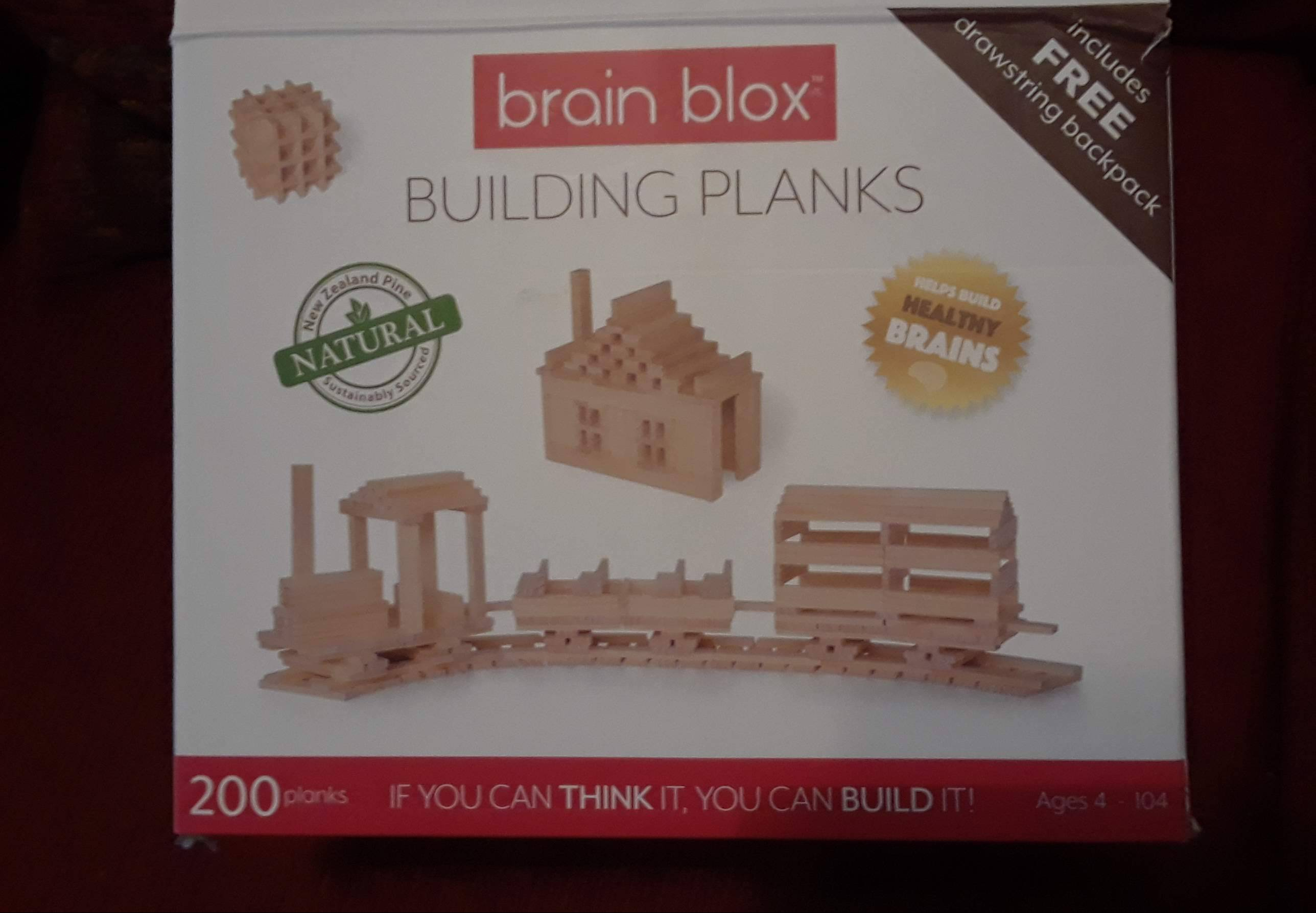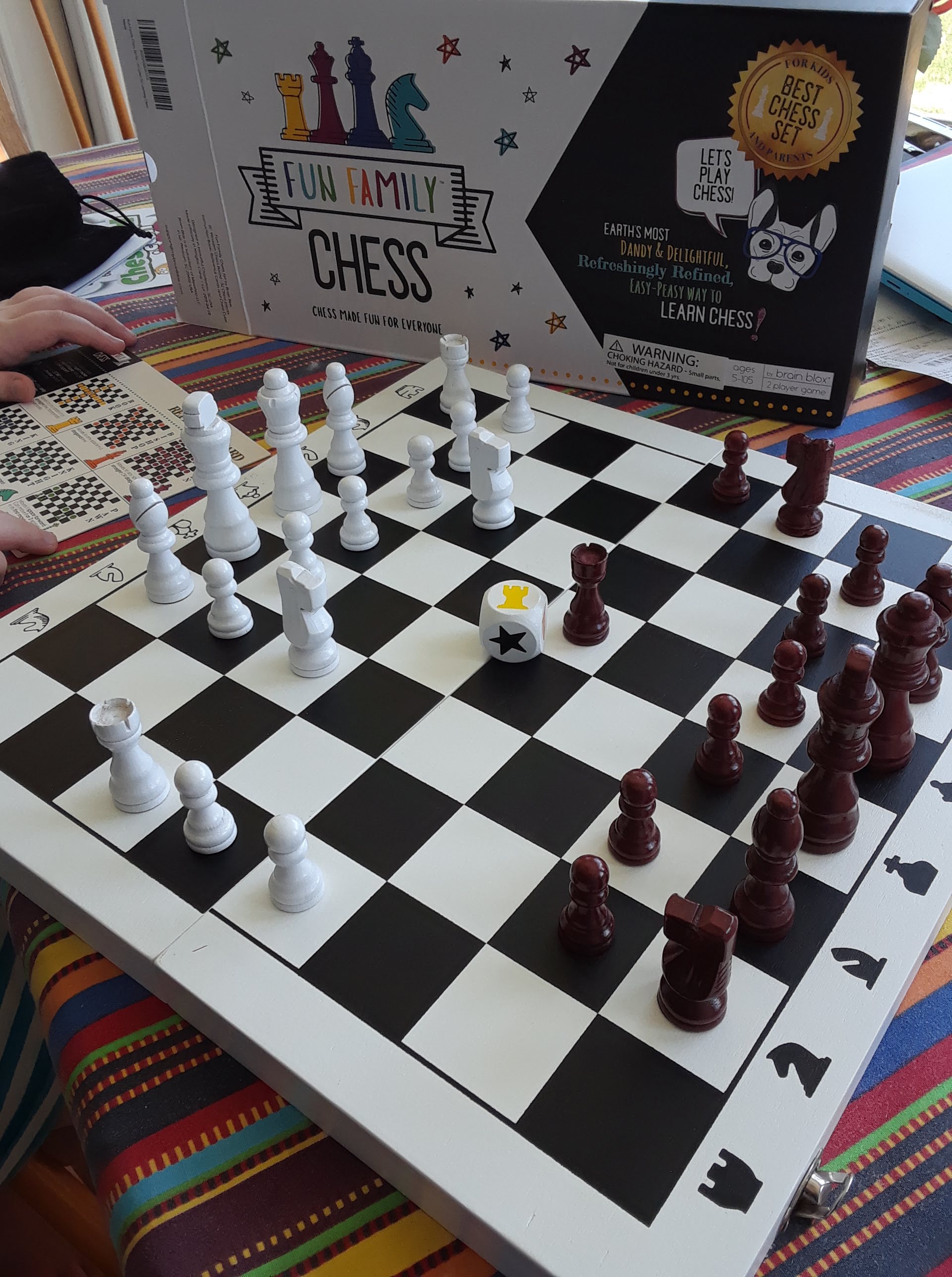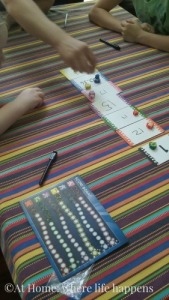Disclosure: I received this product free through the Homeschool Review Crew.

Byron’s Games has brought us another fun learning game. This time it is an exploration of music history through composers with the game Maestro Mastery – Explore the Composers.
Whether your students are already familiar with many composers or are early on in their experiences with composers, this matching game will meet them where they are. Featuring 52 composers, the game comes with a set of matching cards for each composer. Both cards have matching pictures of the composer, the country of origin, the musical time period, and the composer’s birth and death dates. One of the cards also has a banner across it with a short, interesting biography of the composer. The basic idea of the game is to match cards and learn a bit about the composer in the process.
Also included in the game is a large poster with all of the composers on it it, a time line card, and instructions for play. The instructions also include information on how to access samples of the composers’ music on the Byron’s Games website. This all comes in a study box for storage.
My youngest just turned 12 and she has been enjoying this game. She adores playing games and learns quite a lot from games such as this. She has asked about once a week to play Maestro Mastery since we received it. I certainly don’t mind since music is such a part of our family life.
We played by picking one of the 2 decks of cards. Each deck has 26 composers in it so it is a large number of cards and each set has a good variety of composers, featuring at least one from each time period (the way the decks are sent – that would be different if you have mixed your decks up, which we have not yet). We lay them out face down and just do a simple matching game. We take turns and with each card we turn over, we look at it, read the composer’s name, nation of origin, and music time period. If it is a match, we keep the set and go again. If it is not a match, the other person gets a go at it.
As we get matches, we line them up according to music time period. We keep the musical period timeline visible between us so we can point out where the match is from on it. We also have the big poster close by so we can see what other composers are part of that time period.
To further the experience, it is a wonderful thing to listen to music from the composers. While 26 selections is a bit much for one game and it would prolong the game a lot, we pick one composer and put on a CD. (We have a large library of music and are excited to have another way to share our favorite composers with the girls.) You can also access samples of each composer’s music on the Byron’s Games website, using the information included on the instructions card.
As with all of the games we have seen from Byron’s Games, this is a very flexible game that can be modified to fit multiple age levels, interest levels, or ability levels. I could see using this matching game with a younger student by having one of each of the composer card sets already visible so they are just trying to find the one to match what is turned over. You could also make it more difficult by having all of the cards out. If you wanted to focus on listening, you could use a set of 4 or 5 composers, listen to their pieces, and then play what my college teacher would call “drop the needle” even though we weren’t using record players. (I’m not quite that old!) Have the student try to identify which composer wrote the piece of music that is played out of the 4 or 5 composers shown.
A variation we used was to combine this with the Continent Race game, also from Byron’s Games. After we had found our matches, we grabbed the continent maps and placed the composers on the correct continent. We then identified the countries for each of the composers on those maps. You could add yet another variation by each person trying to get matches for a certain continent or country.
One constant for us, though, was to listen to at least one piece of music by a composer from the game either while we played or after. A favorite way to choose was for Miss J to find a composer whose name sounded interesting. The website selections are easy to access by choosing the picture for the composer that aligns with the poster for the game. The play button is right on the card for each composer.

This is a wonderful game to add to our collection and I am thrilled that it is music related. We have enjoyed playing this game a good bit and will continue to play in the future. A definitely recommend.
Other Homeschool Review Crew families have been playing Maestro Mastery – Explore the Composers but other families received the The Family Journal. Visit the Crew blog page to read more reviews on both the game and the journal from Byron’s Games.
Blessings,
Lori, At Home.

























 It includes over 200 flag cards that are color coded to go with the map and have the flag, country name, and capital city name.
It includes over 200 flag cards that are color coded to go with the map and have the flag, country name, and capital city name.



 Other options for increasing difficulty or upping the learning? Maybe you have to spell the country or find it on the maps before you get to claim the set as complete. Maybe you have to read and spell the capital city. What are you wanting to reinforce? Make it a part of the game.
Other options for increasing difficulty or upping the learning? Maybe you have to spell the country or find it on the maps before you get to claim the set as complete. Maybe you have to read and spell the capital city. What are you wanting to reinforce? Make it a part of the game.













































 makes their vote for which guess they think is closest without going over. You can vote both your meeples on one card or on different cards. Then the answer is read and the right guess is determined. Points are awards for correctly voting and for writing the winning guess.
makes their vote for which guess they think is closest without going over. You can vote both your meeples on one card or on different cards. Then the answer is read and the right guess is determined. Points are awards for correctly voting and for writing the winning guess.






